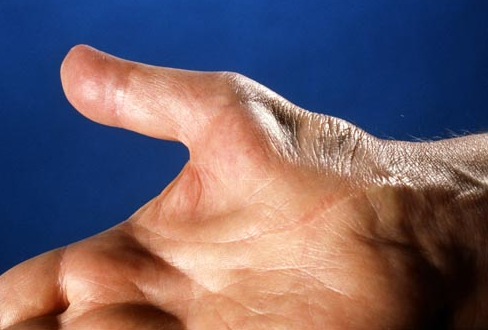
Combatting Carpal Tunnel Syndrome: Expert Physiotherapy Solutions at Lane Cove
Why does my hand hurt at night?
Is Carpal tunnel syndrome (CTS) causing my hand pain?
Are you experiencing persistent hand pain, especially at night, and wondering if it’s CTS? You’re not alone. As a prevalent condition, CTS often leads patients to seek help from their local Lane Cove physio.
What is Carpal Tunnel Syndrome?
Carpal Tunnel Syndrome is a condition characterised by pain and discomfort in the hand and arm caused by compression of the median nerve. This nerve runs through the carpal tunnel, a narrow passageway on the palm side of your wrist, alongside tendons and nerves.[1]
The median nerve carries signals to the brain from these parts of your hand:
- Thumb
- Index finger
- Middle finger
- Parts of the ring finger
- Parts of the palm closest to the thumb
Key Symptoms of Carpal Tunnel Syndrome
- Pain: Often sharp, occurring in the thumb, index, and middle fingers.
- Tingling or Numbness: A sensation akin to ‘pins and needles’ in the affected fingers.
- Swelling: Feeling of fullness in the hand.
- Temperature Sensitivity: Difficulty discerning between hot and cold.
- Reduced Coordination: Difficulty in handling small objects.
- Night-time Discomfort: Pain intensifying during the night, leading to disturbed sleep.
Causes of Carpal Tunnel Syndrome
The cause of CTS is various, often involving a combination of factors:
- Anatomical Factors: A wrist fracture or deformity that narrows the carpal tunnel.
- Chronic Illnesses: Conditions like rheumatoid arthritis, diabetes, and hypothyroidism.
- Inflammatory Conditions: Leading to swelling within the wrist.
- Obesity: Higher BMI can increase the risk.
- Repetitive Use of Wrist: Actions that involve extreme flexion or extension of the hand.
- Fluid Retention: Common during pregnancy or menopause.
- Workplace Ergonomics: Poor wrist posture during prolonged typing or driving.
Diagnosis of Carpal Tunnel Syndrome
It’s important to differentiate CTS from other conditions that have similar symptoms, such as nerve compression at the elbow or neck, and various types of arthritis. The initial step in diagnosing CTS is a thorough physical examination. This examination typically includes:
- History Taking: Understanding any medical history, symptoms, and any activities that may exacerbate the condition.
- Visual Inspection: Observing the wrist for swelling, discoloration, or other physical abnormalities.
- Palpation: Feeling the wrist to detect any swelling or tenderness.
- Phalen’s Test: The patient presses the backs of their hands together for about a minute. Tingling or numbness in the fingers indicates CTS.
- Tinel’s Sign: Tapping on the median nerve at the wrist. A tingling sensation in the fingers suggests CTS.
- Hand Strength and Sensation Testing: Assessing grip strength and the sensation in the fingers and hand.
How Can Physiotherapy Help Improve CTS?
Determining the root cause and contributing factors is key in the management of CTS. For instance, if your symptoms are related to a fracture or an injured tendon, reducing inflammation will help reduce pressure in the carpal tunnel.
Physiotherapy for CTS focuses on reducing symptoms, improving function, and preventing further nerve damage. The approach includes a combination of exercises, manual therapies, and education about wrist management to alleviate the pressure on the median nerve.
Early-Stage Management
- Wrist Splints: Keeping the wrist in a neutral position, especially at night, to relieve pressure.
- Activity Modification: Avoiding or modifying activities that exacerbate symptoms.
- Exercises: Specific exercises, like tendon and nerve glides, can alleviate symptoms and improve function.
Advanced Management
- Strengthening Exercises: Focusing on muscles around the wrist to support and reduce strain.
- Nerve Gliding Exercises: To improve nerve mobility within the carpal tunnel.
- Manual Therapy: Gentle manipulations to improve wrist and nerve function.
Prehab and Rehab Post-Surgery
If surgery is necessary, prehabilitation (prehab) and rehabilitation (rehab) are crucial. These include exercises to maintain strength and mobility before surgery and a tailored program post-surgery to facilitate recovery.
Frequently Asked Questions About Carpal Tunnel Syndrome
Can Carpal Tunnel Syndrome Be Prevented? While not all cases are preventable, minimising risk factors like maintaining a healthy weight, ergonomic workplace settings, and regular breaks during repetitive tasks can help.
How Long Does It Take to Recover from Carpal Tunnel Syndrome? Recovery time varies depending on the severity of the condition and the treatment approach. Mild cases may resolve within a few weeks of conservative treatment, while more severe cases, especially those requiring surgery, may take longer.
Are There Any Home Remedies That Can Help? Yes, simple measures like resting the affected hand, using cold packs to reduce swelling, and gentle stretching exercises can provide relief.
When Should I See a Physiotherapist? If you experience persistent symptoms of CTS, especially if they interfere with your daily activities or sleep, it’s wise to consult a physiotherapist.
Can CTS Recur After Treatment? There’s a possibility of recurrence, especially if the underlying causes, like repetitive strain or certain health conditions, are not addressed.
Carpal Tunnel Syndrome is a treatable condition, and physiotherapy plays a crucial role in its management. If you’re experiencing symptoms of CTS, early intervention is key.
Contact Lane Cove Physio at (02) 9428 5772 or email us at [email protected] for a consultation. Our expert team is ready to help you manage your symptoms and improve your quality of life.
[1] Duckworth, Andrew D., MBChB, MSc, Jenkins, P. J., MBBS, & McEachan, J. E., MBBS. (2014). Diagnosing carpal tunnel syndrome. Journal of Hand Surgery, 39(7), 1403-1407



